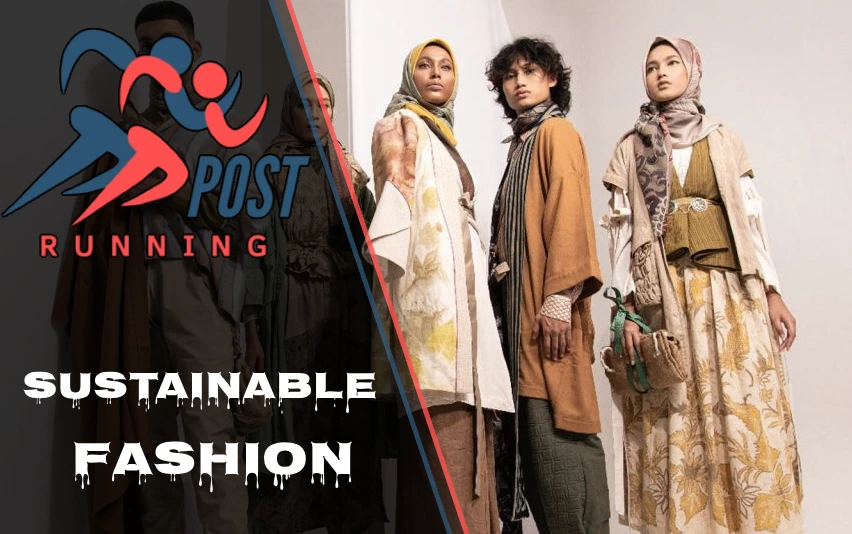Sustainable fashion is taking the world by storm, and it’s not just a passing trend. It’s a movement that’s reshaping the way we think about clothes, from how they’re made to how we wear and dispose of them. In this article, we’ll dive into the world of sustainable fashion, exploring what it means, why it matters, and how it’s changing the face of the fashion industry.
What is Sustainable Fashion?
At its core, sustainable fashion is all about creating clothing in a way that’s kinder to our planet and the people who make our clothes. It’s a holistic approach that considers the environmental, social, and economic impacts of fashion.
Sustainable fashion isn’t just about using eco-friendly materials, though that’s a big part of it. It’s also about fair wages and safe working conditions for garment workers, reducing waste and pollution in the production process, and creating clothes that last longer and can be recycled or upcycled at the end of their life.
You might hear sustainable fashion called by other names too, like ethical fashion, eco-fashion, or conscious clothing. While there can be slight differences in these terms, they all share the same goal: making fashion more responsible and less harmful.
The Need for Sustainable Fashion
Let’s face it: the traditional fashion industry has a pretty big environmental footprint. Fast fashion, in particular, has been a major culprit. It’s all about churning out cheap, trendy clothes as quickly as possible, often at the expense of the environment and workers’ rights.
Here are some eye-opening facts:
- The fashion industry is responsible for about 10% of global carbon emissions.
- It uses around 93 billion cubic meters of water annually – that’s enough to meet the needs of 5 million people.
- About 85% of textiles end up in landfills each year.
But there’s good news: consumers are becoming more aware of these issues. More and more people are looking for sustainable alternatives when they shop for clothes. They want to know where their clothes come from, how they’re made, and what impact they have on the environment.
Key Practices in Sustainable Fashion
So, how exactly does sustainable fashion work? Let’s break it down:
Eco-Friendly Materials
Sustainable fashion brands are always on the lookout for materials that are kinder to the environment. This might include:
- Organic cotton, which is grown without harmful pesticides
- Recycled polyester, made from plastic bottles
- Tencel, a fabric made from wood pulp
- Hemp, a durable and fast-growing plant
Ethical Labor Practices
Sustainable fashion isn’t just about the environment – it’s about people too. Ethical brands ensure their workers are paid fair wages and work in safe conditions. They often partner with local artisans and support traditional craftsmanship.
Circular Fashion
This is all about keeping clothes out of landfills. Circular fashion focuses on:
- Designing clothes to last longer
- Making it easier to repair and alter clothes
- Creating systems for recycling or upcycling old garments
Reducing Waste and Resource Consumption
Sustainable fashion brands are always looking for ways to use fewer resources and create less waste. This might involve:
- Using digital printing to reduce water usage
- Implementing zero-waste pattern cutting techniques
- Using renewable energy in factories
Market Growth and Projections
The sustainable fashion market is growing fast. In 2020, it was valued at about $6.35 billion, and it’s expected to reach $9.81 billion by 2025. That’s a compound annual growth rate (CAGR) of 9.1%.
North America is currently leading the charge in sustainable fashion, but the movement is gaining traction worldwide. As more consumers become aware of the impact of their clothing choices, the demand for sustainable fashion is only expected to grow.
Challenges in Sustainable Fashion
While sustainable fashion is making great strides, it’s not without its challenges:
Higher Production Costs
Sustainable materials and ethical labor practices often cost more, which can lead to higher prices for consumers. This can make it harder for sustainable brands to compete with fast fashion prices.
Balancing Sustainability with Profitability
Brands need to find ways to be sustainable while still turning a profit. This can be a tricky balance, especially for smaller brands.
Consumer Willingness to Pay
While many consumers say they want sustainable options, not all are willing to pay higher prices for them. Educating consumers about the true cost of fast fashion is an ongoing challenge.
Leading Sustainable Fashion Brands
There are many brands leading the way in sustainable fashion. Here are just a few:
- Patagonia: Known for their commitment to environmental activism
- Eileen Fisher: Pioneers in circular fashion
- Reformation: Focuses on sustainable materials and transparent supply chains
- Everlane: Champions “radical transparency” in their production process
- Stella McCartney: Luxury fashion with a sustainable twist
Consumer Role in Sustainable Fashion
As consumers, we play a crucial role in driving the sustainable fashion movement. Here’s how we can make a difference:
Changing Consumption Patterns
Instead of buying lots of cheap, trendy items, consider investing in fewer, higher-quality pieces that will last longer. This “slow fashion” approach can significantly reduce your fashion footprint.
Conscious Buying and Care
When shopping, look for sustainable materials and brands with transparent supply chains. Once you’ve bought your clothes, take good care of them:
- Wash clothes less frequently and at lower temperatures
- Repair items instead of replacing them
- Donate or recycle clothes you no longer wear
Conclusion
Sustainable fashion is more than just a trend – it’s a necessary shift in how we think about and consume clothing. While there are challenges to overcome, the growth of the sustainable fashion market shows that consumers are ready for change.
As we move forward, sustainable fashion will likely become the norm rather than the exception. By making conscious choices about what we wear and how we care for our clothes, we can all play a part in creating a more sustainable future for fashion.
Remember, every purchase is a vote for the kind of world you want to live in. So next time you’re shopping for clothes, why not make it a vote for sustainability?
Discover more fascinating insights—explore Running Posts today.














